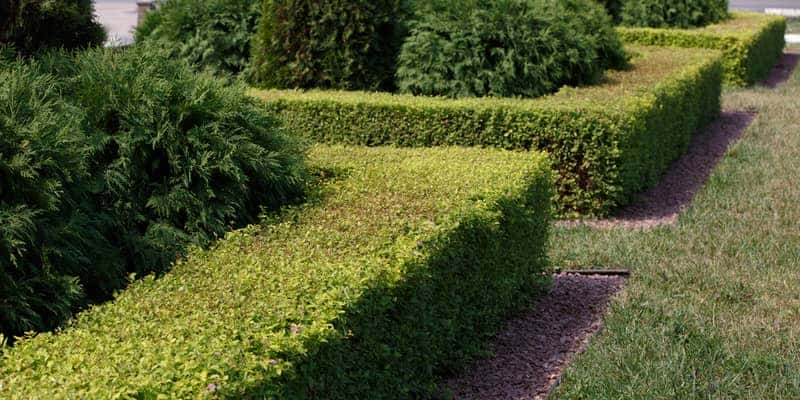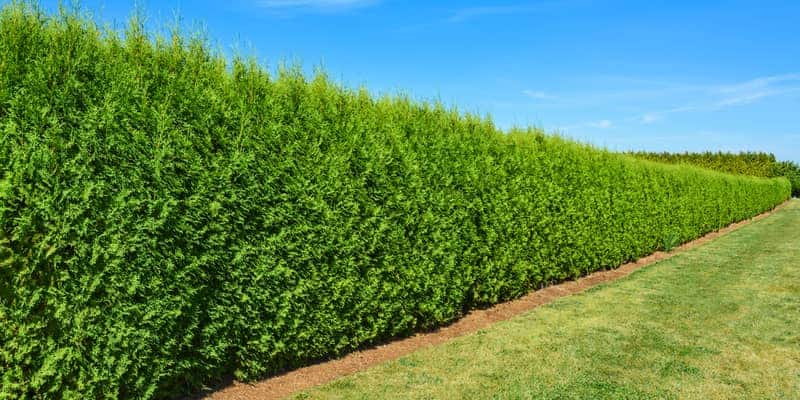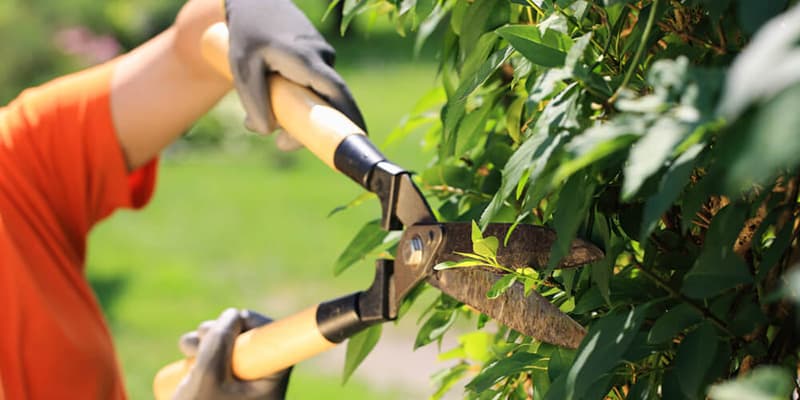It’s no wonder why many garden owners are growing hedges — these shrubs are a natural and more attractive alternative to conventional walls. They also make great windbreaks or privacy screens.
If you’re thinking that it’s challenging to plant and maintain a hedge in your garden, worry not. This complete guide will take you through the step-by-step process on how to grow a hedge, no green thumb required.
What is a good hedge plant?
Choosing the right plant to use as a hedge is an important decision. Do you want a slow-growing hedge like buxus or corokia, tall like the pittosporum or Portuguese laurel, or flowering like the camelia?
Here are two factors you want to consider when picking your hedge shrub:
- Intention for adding a hedge in your garden. Before going ahead and picking the first shrub you see in the nursery, ask yourself what the hedge is for. There are different types of hedges to suit different purposes. Murraya hedges, for example, are perfect as ornamental shrubs because of their flowering nature.
- Speed of growth. Fast-growing hedges — as their name suggests — can quickly fill up an empty garden space. Because of their speed of growth, however, these hedges require regular maintenance. Pruning and trimming fast-growing hedges ensures that they don’t take over your other garden plants.
How to grow hedges
Growing hedges requires a good amount of well-draining soil, frequent waterings, and regular pruning and trimming.
How do you start a hedge?
To grow a healthy hedge in your garden, pick the right shrub for your garden’s environmental conditions. Make sure you have enough shrubs for your plot, and use well-draining enriched soil to encourage proper hedge growth.
1. Pick the right shrub
When it comes to starting a hedge in your garden, the right preparation counts. Choose a shrub that suits your gardening needs. If you’re unsure about which plant to use, you can ask your local gardeners for their recommendations.
2. Estimate how many shrubs you need
The next thing you need to check is how many shrubs you will need. Ensure that you have enough plants to make a dense hedge for your plot. Space the shrubs depending on how thickly or thinly their foliage is formed.
3. Use well-draining soil
For best results, use well-draining soil for your hedge. You can add gypsum to your planting mix if it has a high clay content.
4. Enrich the planting mix
Add sheep pellets to enrich the planting mix — doing this also improves soil structure by encouraging earthworms and other organisms to burrow in the soil.
How to plant a hedge
To plant a hedge, start by digging a hole in the ground that is as deep as the shrub’s pot. Gently transplant the shrub into the plot, taking care to loosen the soil surrounding the root area. Water the newly planted hedge well, then add a layer of mulch on the top soil to help regulate moisture.
To grow a dense and healthy hedge, you’ll need the following:
- Shrub for hedging
- Planting mix
- Shovel
- Watering can
- Fertiliser
- Mulch
- Shears
1. Prepare the planting site
Check that your garden soil is well-draining. To prepare the plot, dig a hole that is as deep as the shrub’s pot. Check for pipes in the soil that may obstruct root growth.
2. Remove the plant from its pot
Gently remove the plant from its pot. Loosen the soil surrounding the root area to help the roots combine seamlessly with the planting soil.
3. Position the plants
Position the shrubs parallel to the direction you want the hedge to grow. Cover the plants with soil as soon as the shrubs are in their proper position.
4. Water the plants
Spray your newly planted shrubs with a seaweed tonic solution. Water well to allow the tonic solution to penetrate the roots. Seaweed has many benefits for plants, such as promoting growth and increasing plants’ resistance to disease and stress.
5. Mulch
Add a layer of mulch when you’re done watering. Mulching helps keep the soil cool and prevents weeds from growing.
How to prune a hedge
To prune a hedge, first make sure that your hedge is well-established. Allowing it to grow and thicken for at least a year helps. Once it’s ready for pruning, prune from one end of the hedge to another using smooth movements. Electric shears can be used for larger hedges.
1. Allow the hedge to establish
Let the shrubs grow out and thicken for one year. Once the hedge has established, prune it every 3 or 4 months according to your desired shape.
2. Prune from one side of the hedge to the other
Start pruning from one end of the hedge going towards the other end using smooth movements. Pruning larger hedges can be challenging — you can use electric shears for this task or have professional hedge trimmers help out.
FAQs
How long does it take to grow a hedge?
Depending on the type of plant you use, growing a hedge can take between three to seven years before it becomes fully established. You can grow a hedge faster by buying a semi-mature shrub, but these require extra care and maintenance.
How do you grow hedges quickly?
To make your hedges grow quickly, water them quickly during the first year of growth. Water well near the roots to give the plants sufficient hydration.
How do you grow a thick hedge?
To grow a thick hedge, fertilise the shrubs every 6 months. Feeding hedges with fertiliser twice a year ensures that they grow healthy and resistant to disease. Another gardening trick is to use mulch — mulching prevents weeds from growing and keeps soil moisture and temperature well-regulated. Last but not least, make sure you have enough plants to make a dense and leafy hedge.
What is the fastest growing hedge plant?
There are many fast-growing hedges in Australia. Among them are lilly pillys, which are popularly used as privacy screens in gardens. Leylandii and podocarpus also grow quickly and are suitable for privacy screens and windbreak. Other fast-growing hedge plants include bamboo and Syzgium smithii.
How do you plant a hedge fence?
To make a hedge fence, gardening experts recommend choosing plants that make tall and dense hedges. Leylandii hedge is a popular choice for its dense form and fast-growing nature. This hedge variety also makes for low-maintenance privacy screens and windbreaks.





